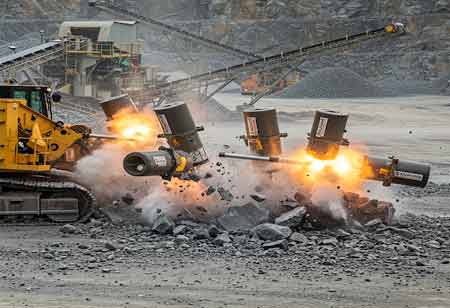Thank you for Subscribing to Auto Business Outlook Weekly Brief
Customizing the Future: Trends in Tesla Aftermarket Accessories

By
Auto Business Outlook | Thursday, May 15, 2025
Stay ahead of the industry with exclusive feature stories on the top companies, expert insights and the latest news delivered straight to your inbox. Subscribe today.

The automotive aftermarket industry has long been a hub for customization, where vehicle owners seek to personalize and enhance their driving experience. Among the many segments of this expansive market, the Tesla aftermarket accessories sector stands out due to the unique nature of Tesla’s vehicles and the growing number of eco-conscious consumers opting for electric cars. With Tesla’s reputation for innovation and continuously evolving lineup, the demand for accessories explicitly tailored to these vehicles has surged. As Tesla owners look to customize their vehicles further, a new wave of aftermarket solutions has emerged, offering everything from tech-driven accessories to eco-friendly enhancements.
Current Landscape of the Tesla Aftermarket Accessories Industry
The Tesla aftermarket accessories market has grown tremendously in recent years, fueled by the increasing popularity of Tesla electric vehicles (EVs). As the demand for EVs continues to rise, so does the need to customize and personalize these vehicles. Tesla owners often seek to enhance their driving experience with aftermarket products such as floor mats, spoilers, performance upgrades, and advanced tech accessories. This rising trend has led to a thriving market for online and physical stores catering to Tesla owners, offering a wide range of accessories to suit their needs.
The expansion of Tesla’s customer base and the diverse range of products have created a competitive environment for manufacturers and service providers. Companies are leveraging technological advancements to offer more efficient, user-friendly solutions, from custom-fit products to software-driven accessories that integrate seamlessly with Tesla’s unique operating system. This ensures customers access high-quality accessories that complement Tesla’s innovative design and performance features.
Obstacles and Their Respective Solutions in the Tesla Aftermarket Sector
Like any rapidly evolving industry, the Tesla aftermarket accessories sector faces various challenges. One significant obstacle is the complexity of compatibility between aftermarket products and Tesla vehicles’ unique design. With Tesla frequently updating its software and hardware, there is a risk that aftermarket accessories may not integrate well with the latest models. This creates frustration for customers who seek to modify or personalize their vehicles but find that the products they purchase are not compatible with their current system.
To address this challenge, many accessory providers work closely with Tesla to ensure their products are compatible with various vehicle models and software versions. Companies are investing in research and development to create future-proof products with universal features that can adapt to Tesla’s ongoing updates. Collaborating with Tesla or staying informed on the latest model updates allows manufacturers to offer high-quality accessories that remain functional and relevant, providing a seamless integration experience for customers.
Another challenge in the aftermarket sector involves warranty concerns. Tesla owners are often cautious about third-party accessories because they fear installing aftermarket parts may void their vehicle’s warranty. Many accessory manufacturers now offer warranties to mitigate this issue, reassuring customers that the items will not cause long-term damage to their vehicles. Some aftermarket suppliers work with Tesla-certified installers to ensure installation processes meet the necessary standards and do not interfere with the vehicle’s warranty.
Potential Growth and Technological Innovations Benefiting Stakeholders
The Tesla aftermarket accessories market is rife with growth potential, driven by ongoing technological innovations. One key prospect lies in developing smart, tech-driven accessories that integrate with Tesla’s advanced autopilot system. Products such as wireless charging pads, custom-fit dash cams, and enhanced lighting systems are becoming increasingly popular as drivers look for ways to improve their vehicles’ functionality and aesthetic appeal. As Tesla continues strengthening its software, it allows aftermarket companies to create more sophisticated accessories that seamlessly integrate with the onboard systems.
The proliferation of electric vehicles presents a possibility of capitalizing on the growing interest in sustainability. Customers are environmentally conscious and prefer products made from sustainable materials. Accessory manufacturers can use this trend by offering eco-friendly options like recycled floor mats, solar-powered charging stations, and energy-efficient lighting solutions. By aligning with the values of Tesla, aftermarket companies can create products that appeal to the environmentally aware customer base, fostering brand loyalty and driving market growth.
The development of personalized customization options presents another significant opportunity. As Tesla vehicles are known for their minimalist design, owners often seek accessories that reflect their style while maintaining the vehicle’s aesthetic integrity. Companies can explore opportunities to offer bespoke customization options such as custom upholstery, unique exterior wraps, and personalized infotainment settings. By offering various design options, manufacturers can appeal to a larger group of Tesla owners seeking a more customized driving experience.
The rise in demand for Tesla aftermarket accessories represents a growing revenue stream for manufacturers and service providers. As more customers seek ways to personalize and enhance their vehicles, accessory companies can diversify their product offerings and cater to broader customer needs. The persistent development of the electric vehicle market and the increasing adoption of Tesla’s technology present a long-term opportunity for stakeholders to capitalize on this expanding market.






